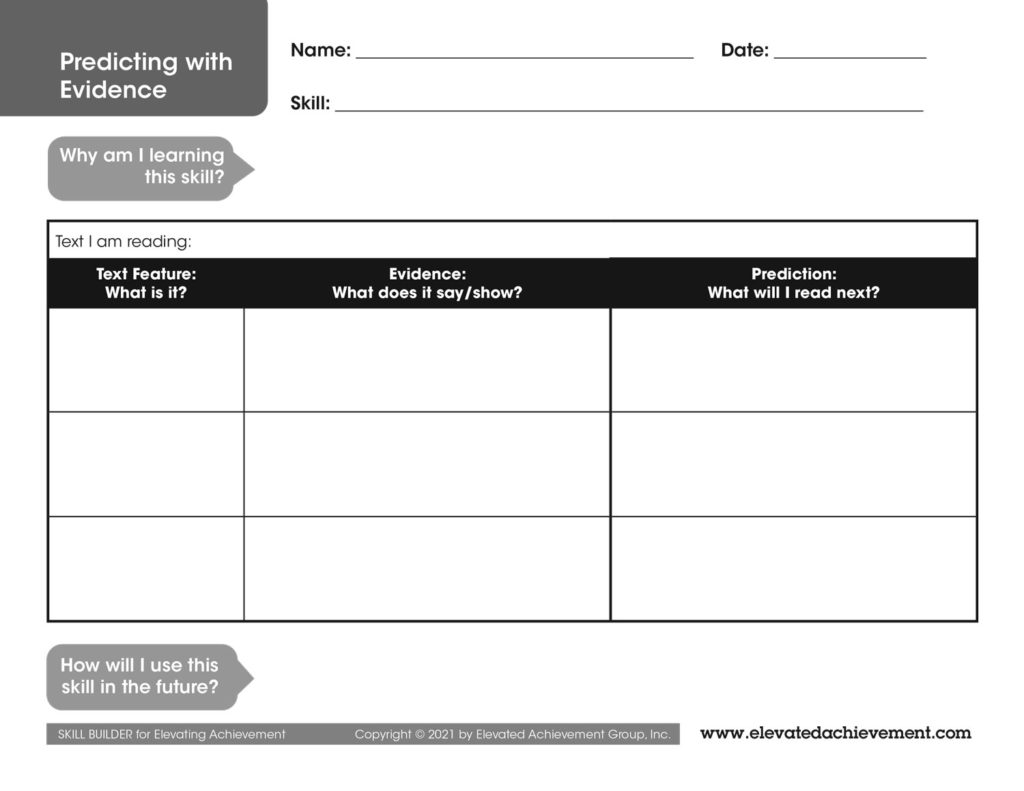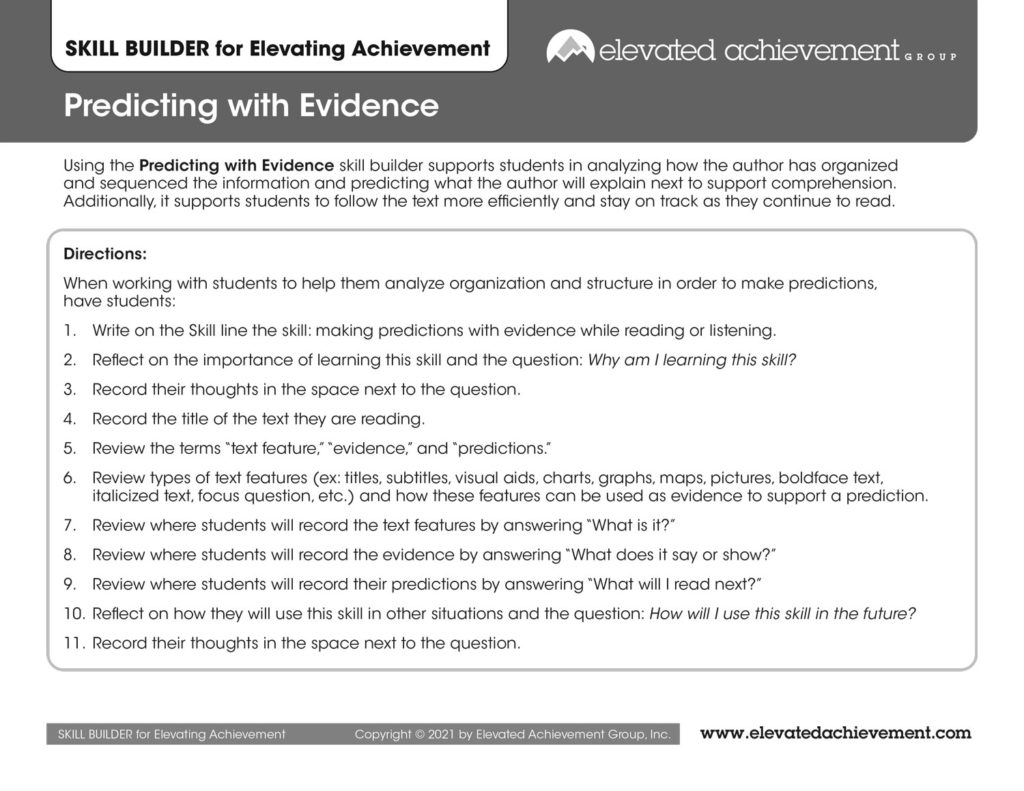Share this article.
Deep learning—of anything—requires effective reading comprehension skills. One skill that is often overlooked is the skill of predicting what the author is going to explain next. Understanding how the author has organized and sequenced the information allows the reader to follow the text more efficiently. Predicting keeps a reader on track as they continue to read.
Research bears this out.
“In order to be a good reader, learners should set a goal for their reading; therefore good readers have a purpose for reading. One strategy for improving comprehension is predicting, which helps the reader set a purpose for their reading. Research has shown that good readers use their experiences and knowledge to make predictions and formulate ideas as they read (Block & Israel, 2005). This strategy also allows for more student interaction, which increases student interest and improves their understanding of the text (Oczkus, 2003). It is important to compare the outcome in the actual text with the prediction process as it will lead the learner to improve his understanding. Without this aspect of the prediction process, it becomes meaningless to improving the student’s comprehension (Duke & Pearson, 2005).” (Küçükoglu, 2012)
What Does It Mean to Be a Predictor of Text?
For our students to be successful readers they must take ownership of their reading and of the reading comprehension skill of predicting. But ownership for students needs to be more than just doing the skill—it is recognizing the importance of the thinking behind the predicting and turning themselves into a predictor of text.
 In other words, students must move from just predicting to understanding how to use text features and information to focus on what they will read next to owning the role of predictor whenever they are accessing information from the text.
In other words, students must move from just predicting to understanding how to use text features and information to focus on what they will read next to owning the role of predictor whenever they are accessing information from the text.
A predictor thinks like this, “When I read, I need to predict what I will be reading next. I use context clues, text supports like titles, subheads, visuals, and any other evidence to make my prediction and explain my thinking. This helps me understand the author’s thinking about their writing. I make sure I know what the author is telling me before I take my notes. Predicting keeps me on track as I read.”
How Can Your Students Become Predictors?
Teaching students to become predictors can be done in a variety of ways. One way to help students practice the role of predictor is to use the following graphic organizer as a tool for building this skill.
 Here are the directions you can use with your students.
Here are the directions you can use with your students.
Click here to download this Skill Builder and its directions.
So, Why Develop Predictors of Text?
 Comprehension is stronger when students have an opportunity to predict what they will read next and talk about it. Talking about the reading is stronger when students are able to not only ask questions, but to also clarify ideas, restate the facts, and share what they think they will be reading next. The ability to effectively question, clarify, summarize, and predict is stronger when readers are explicitly taught each of these skills. That’s Reciprocal Teaching, and it is an instructional strategy that not only promotes deep reading, but also student ownership of learning.
Comprehension is stronger when students have an opportunity to predict what they will read next and talk about it. Talking about the reading is stronger when students are able to not only ask questions, but to also clarify ideas, restate the facts, and share what they think they will be reading next. The ability to effectively question, clarify, summarize, and predict is stronger when readers are explicitly taught each of these skills. That’s Reciprocal Teaching, and it is an instructional strategy that not only promotes deep reading, but also student ownership of learning.
Continue the Learning
Check out these articles and resources to continue your learning about this topic…
The Learning Brief
In this article you learned…
- Why deep learning requires deep reading.
- To ensure accurate reading comprehension, students must move from just predicting to understanding how to use text features and information to focus on what they will read next to owning the role of predictor whenever they are accessing information from the text.
- Making predictions with evidence while reading or listening is a reading skill that can and should be taught.
Can you imagine building an environment full of motivated, engaged, and eager students who own their learning?
We can.


